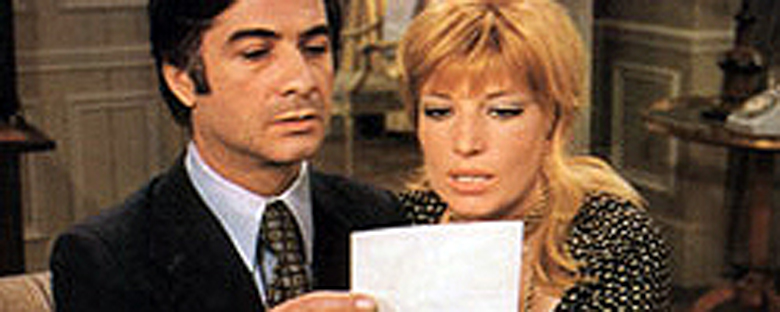Reviews
Le Fantôme de la liberté
Luis Buñuel
Italy / France, 1974
Credits
Review by Teddy Blanks
Posted on 25 May 2006
Source The Criterion Collection DVD
The Phantom of Liberty reaches its irreverent peak in a scene that has a small gathering of well-to-dos seated around a table, on toilets instead of chairs, reading magazines as they defecate. Occasionally, one will excuse himself and enter the dining room — it has the size and decor of a bathroom — and eat. Food, it seems, is impolite to mention at the table. Luis Buñuel was in his seventies when he made The Phantom of Liberty, and his tendency for subversion had not softened with age. In particular, his avid derision of the bourgeoisie drew controversy and censorship: when Viridiana, funded by an eager-to-sponsor-the-arts Franconian government, was unveiled in 1961, it was immediately banned in Spain. (Supposedly, Franco ordered all prints of it burned; it survived, going on to win the Palm D’or.) By the time he made The Phantom of Liberty his pictures were generally received with more praise than controversy, perhaps because the French were more accommodating to Buñuel than those in his native country.
Unlikely as it is to shock or seriously offend today, The Phantom of Liberty remains remarkably fresh and funny. Almost all of Buñuel’s surrealist gags work here, as when a teenage boy brings his favorite aunt to a country inn and tries to get her into bed (“How I’ve waited for this,” he says), or when a group of smoking and drinking monks play poker, anteing up with religious medallions. Buñuel does not love his characters; he is indifferent to them. His assured, detached camera never plays favorites—everyone is subject to its judgment. In a way, The Phantom of Liberty is a flawless polemic, but it has no heart. The joy we derive from it is entirely in the masterful execution of its ideas.
In his introduction to the 2005 Criterion DVD of the film, Buñuel’s co-writer Jean-Claude Carriére says they wanted to:
[…] make a film which would be opposite to all the classical rules of what we call dramatization, to go from one story to another, but leaving a story when it becomes interesting, to go to another one which apparently is less interesting than the first.
This is a succinct description of what they accomplished, but he is giving himself (and Buñuel) too much credit. The Phantom of Liberty basically employs a more complex version of the narrative structure Arthur Schnitzler invented in his turn-of-the-century play La Ronde.
La Ronde is made up of a series of ten scenes, comprising ten sexual encounters, beginning with Person A and Person B, shifting to Person B and Person C, and so on, until Person J ends up with Person A again. The play has been adapted directly to the screen twice, by Max Ophüls (brilliantly) in 1950, and by Roger Vadim (not so brilliantly) in 1964, but it has spawned a number of loosely-based-ons, and even more movies, such as Richard Linklater’s Slacker, that use the same structure to make their own statements.
Buñuel uses this Rondeian form to present a series of contradictory, almost dreamlike narratives. In his alternate universe, a sniper is convicted of several random murders and sentenced to death, only to walk out the front door of the courtroom, shaking hands and signing autographs along the way. And in the film’s most powerful sequence a husband and wife are called into their daughter’s school and told she has disappeared, when it is plainly clear that she is in her seat—they even bring her along to answer questions as they make the missing persons report.
All of these scenes are connected in some way by a character that walks out of one and into the other. Buñuel only breaks Rondeian form a few times, sometimes connecting the movie’s events through mere editing, as when the Police Inspector stares down at his black, leather shoes, and Buñuel cuts to a shot of a new character having his shoes shined. But if the characters in La Ronde are connected by sexual encounters, one could make the argument that the Police Inspector, while not technically in the same room as the man getting his shoes shined, is sharing a moment—a sort of telepathic encounter with him. Unlike La Ronde, though, The Phantom of Liberty’s structure is not circular; it arrives so far from where it began that we are left with only a convoluted memory of how we got there.
We don’t do comments anymore, but you may contact us here or find us on Twitter or Facebook.



